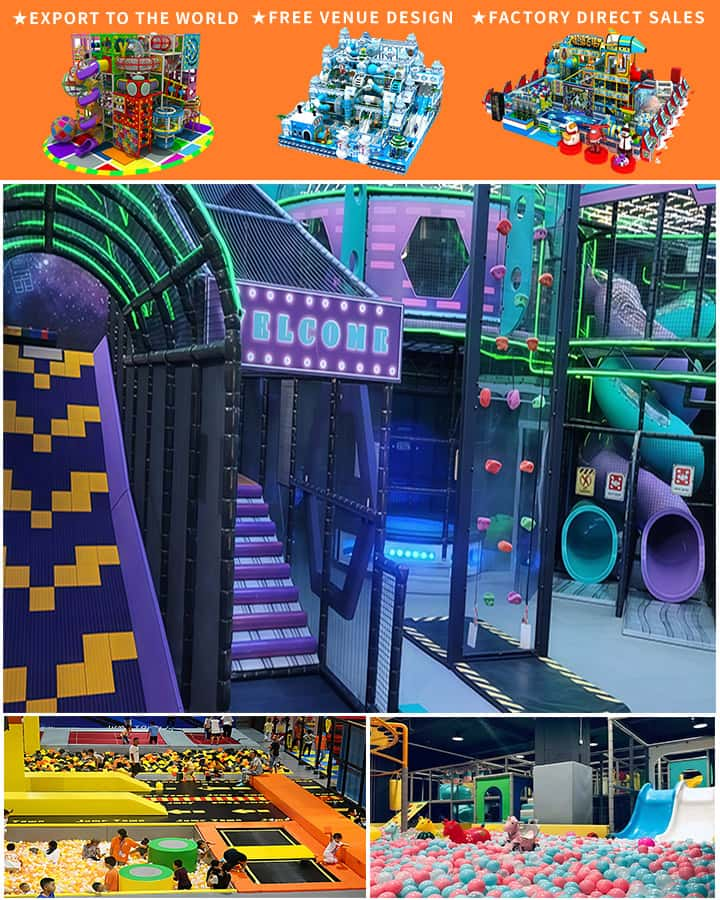Indoor playgrounds have become increasingly popular among parents looking to provide their children with a safe, engaging, and educational environment. For five-year-olds, an age marked by boundless energy and curiosity, these playgrounds offer an ideal space for fun and development. Here’s why an indoor playground is the ultimate destination for young adventurers.
Safe and Stimulating Environment
One of the primary concerns for any parent is the safety of their child. Indoor playgrounds are designed to be secure while providing plenty of room for physical activity. These facilities are often equipped with soft flooring materials, padded walls, and age-appropriate equipment, ensuring that even the most enthusiastic of explorers can play without risk of serious injury.
Moreover, indoor playgrounds are tailored to stimulate young minds. Structured play areas encourage children to engage in activities that promote physical, social, and cognitive development. From climbing walls to interactive slides, every element is crafted to keep kids entertained while fostering growth.
Physical Development
 At five years old, children are in a critical stage of physical development. Indoor playgrounds offer numerous opportunities for gross motor skill enhancement through climbing, sliding, and balancing. Activities like these help improve coordination, strength, and overall physical fitness.
At five years old, children are in a critical stage of physical development. Indoor playgrounds offer numerous opportunities for gross motor skill enhancement through climbing, sliding, and balancing. Activities like these help improve coordination, strength, and overall physical fitness.
For instance, a small climbing wall challenges young ones to use their muscles in new ways, enhancing their upper body strength and endurance. Meanwhile, zip lines and rope courses can boost confidence as children learn to navigate these structures safely.
Social Skills and Emotional Growth
Indoor playgrounds also serve as excellent venues for social interaction. Children at this age benefit immensely from playing with peers, learning vital social skills such as sharing, cooperation, and empathy. Group activities and games organized within these spaces can teach kids how to work together towards a common goal, an essential life skill.
Additionally, indoor playgrounds provide a controlled environment where children can interact without the pressures or distractions found outdoors. This setup allows them to focus on building friendships and developing emotional intelligence in a supportive setting.
Cognitive Enrichment
Educational elements are seamlessly integrated into many modern indoor playgrounds. Interactive exhibits and themed play zones often include puzzles, building blocks, and sensory activities designed to spark creativity and problem-solving abilities. These elements make learning fun and engaging, encouraging children to explore new concepts in a hands-on manner.
For example, a pretend grocery store area within the playground can help kids understand basic math and social roles, while creative arts corners can nurture budding imaginations and fine motor skills.
Weather-Proof Fun
Another significant advantage of indoor playgrounds is their independence from weather conditions. Rainy days or extreme temperatures no longer dampen the spirits of young adventurers. Parents can rely on these facilities to provide consistent entertainment, making it easier to plan family outings regardless of the forecast.
Conclusion
An indoor playground is more than just a place for kids to expend energy; it’s a multifaceted environment that supports the holistic development of five-year-olds. By combining safety with stimulating activities, these playgrounds offer parents peace of mind while ensuring that their children grow physically, socially, and cognitively. So next time you’re looking for a fantastic way to spend the day, consider an indoor playground – a true haven for your little one’s boundless energy and endless curiosity.




